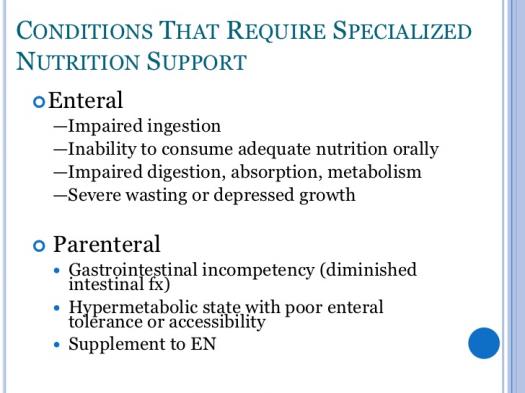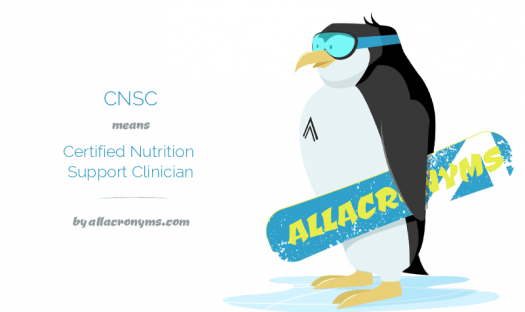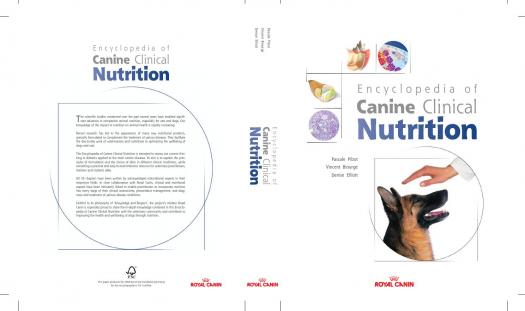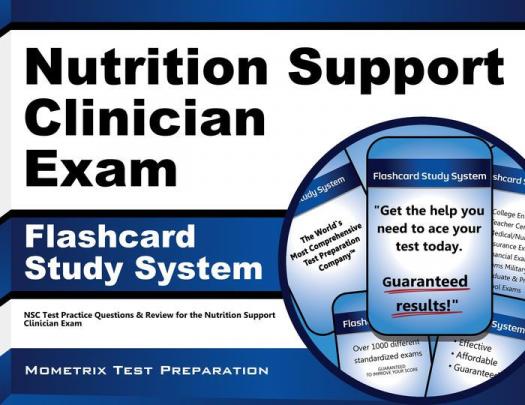Nutrition Support Clinician Exam: Quiz!
.
- 1.
All these are been exerts by the digestive hormone gastrin except:
- A.
Reduced of pepsinogen production by the stomach
- B.
Increased gallbladder contraction
- C.
Increase of HCL
- D.
Increased in pressure of esophageal sphincter
Correct Answer
A. Reduced of pepsinogen production by the stomachExplanation
Gastrin is a digestive hormone that is responsible for stimulating the production of gastric acid in the stomach. It increases the secretion of hydrochloric acid (HCL) and also increases the contraction of the gallbladder. Additionally, it can cause an increase in the pressure of the esophageal sphincter. However, it does not have any effect on the production of pepsinogen by the stomach. Pepsinogen is converted into pepsin, which is an enzyme that helps in the digestion of proteins. Therefore, the correct answer is "reduced of pepsinogen production by the stomach".Rate this question:
-
- 2.
Impaired glucose tolerance is also characterized by:
- A.
a fasting plasma glucose of 100-125 mg/dl.
- B.
Fasting plasma glucose (FPG) > 140 mg/dl
- C.
HbA1c level of 7 or more
- D.
Casual plasma glucose of 400mg
Correct Answer
A. a fasting plasma glucose of 100-125 mg/dl.Explanation
Impaired glucose tolerance is a condition where the body is not able to regulate blood sugar levels effectively, leading to higher than normal levels of glucose in the blood. One of the characteristics of impaired glucose tolerance is a fasting plasma glucose level between 100-125 mg/dl. This means that when a person's blood sugar is measured after an overnight fast, it falls within this range. This indicates that the body is not able to efficiently process glucose and may be at risk of developing diabetes.Rate this question:
-
- 3.
One of these is not true about serum albumin low level?
- A.
It might be a sign of kwashiorkor.
- B.
It can be mostly found in nephrotic syndrome
- C.
It can be use to identify esophageal reflux
- D.
it may be locate with ascites
Correct Answer
C. It can be use to identify esopHageal refluxExplanation
A low level of serum albumin is not used to identify esophageal reflux. Serum albumin is a protein that is primarily produced by the liver and helps maintain the osmotic pressure in the blood. A low level of serum albumin is commonly seen in conditions such as kwashiorkor, a severe form of malnutrition, and nephrotic syndrome, a kidney disorder. It can also be associated with ascites, which is the accumulation of fluid in the abdominal cavity. However, it is not a diagnostic marker for esophageal reflux, which is typically identified through other methods such as endoscopy or pH monitoring.Rate this question:
-
- 4.
The aim of treating cystic fibrosis is:
- A.
Option 1
- B.
Replacement of Pancreatic enzyme
- C.
To increase fat and protein
- D.
B & C
Correct Answer
D. B & CExplanation
The aim of treating cystic fibrosis is to replace pancreatic enzymes in order to increase fat and protein absorption. This is important because individuals with cystic fibrosis often have difficulty digesting and absorbing nutrients, leading to malnutrition. By providing these enzymes, fat and protein metabolism can be improved, helping to address nutritional deficiencies commonly associated with the condition.Rate this question:
-
- 5.
The test used to diagnose phenylketonuria is
- A.
VPR
- B.
Blood sample
- C.
Guthrie test
- D.
Genotype
Correct Answer
C. Guthrie testExplanation
The Guthrie test is used to diagnose phenylketonuria (PKU), a genetic disorder that affects the body's ability to break down the amino acid phenylalanine. This test involves taking a blood sample from a newborn baby and testing it for high levels of phenylalanine. If the levels are elevated, it indicates that the baby may have PKU and further testing and treatment are required. The other options listed (VPR, genotype) are not relevant to diagnosing PKU.Rate this question:
-
- 6.
The clinical signs of cirrhosis of the liver are _________
- A.
Abnormal swelling
- B.
Sleeping
- C.
Ascites and hypoalbuminemia
- D.
Fat malabsorption
Correct Answer
C. Ascites and hypoalbuminemiaExplanation
Cirrhosis of the liver is a condition characterized by the scarring and damage to the liver tissue. Ascites refers to the abnormal accumulation of fluid in the abdominal cavity, which is commonly seen in cirrhosis due to increased pressure in the portal vein. Hypoalbuminemia, on the other hand, is a low level of albumin in the blood, which can occur in cirrhosis due to decreased liver function. These clinical signs, ascites and hypoalbuminemia, are commonly observed in patients with cirrhosis of the liver.Rate this question:
-
- 7.
Hypertension is often been treated with the use of:
- A.
Chlorophenamine
- B.
Anti- malarial
- C.
DASH diet
- D.
Bondoment
Correct Answer
C. DASH dietExplanation
The correct answer is DASH diet. Hypertension, or high blood pressure, is a condition that can be managed through lifestyle changes, including dietary modifications. The DASH (Dietary Approaches to Stop Hypertension) diet is a recommended approach for individuals with hypertension. It emphasizes consuming fruits, vegetables, whole grains, lean proteins, and low-fat dairy products while limiting sodium, saturated fats, and cholesterol. This balanced and nutritious diet has been shown to lower blood pressure and reduce the risk of cardiovascular diseases. Chlorophenamine is an antihistamine, not used to treat hypertension. Anti-malarial medications are used to prevent or treat malaria, not hypertension. "Bondoment" is not a recognized treatment for hypertension.Rate this question:
-
- 8.
The most detrimental effect on the nutritional status of a gastrointestinal surgeries is
- A.
Billroth II
- B.
Billroth III
- C.
All of these
- D.
Ileal resection
Correct Answer
D. Ileal resectionExplanation
Ileal resection refers to the surgical removal of a portion of the ileum, which is the last part of the small intestine. This procedure can have a detrimental effect on the nutritional status of an individual because the ileum is responsible for absorbing important nutrients, such as vitamin B12, bile salts, and other fat-soluble vitamins. Without a functioning ileum, the body may struggle to absorb these essential nutrients, leading to deficiencies and potential complications. Therefore, ileal resection can significantly impact the nutritional status of individuals who undergo gastrointestinal surgeries.Rate this question:
-
- 9.
The LEAST cause of diarrhea in a patient who has been hospitalized receiving enteral nutrition?
- A.
Difficile
- B.
Soluble fiber
- C.
Loss of blood
- D.
Malnutrition
Correct Answer
A. DifficileExplanation
Clostridium difficile is a bacterium that can cause diarrhea, especially in hospitalized patients receiving enteral nutrition. However, the question asks for the LEAST cause of diarrhea. Out of the given options, malnutrition, soluble fiber, and loss of blood can all potentially contribute to diarrhea in a hospitalized patient. Therefore, the correct answer is Clostridium difficile, as it is the least likely cause of diarrhea in this scenario.Rate this question:
-
- 10.
When anti-HIV drug Zerit is been consumed by a patient it's like to cause:
- A.
Headache
- B.
Malaria
- C.
Lipodystrophy
- D.
Malnutrition
Correct Answer
C. LipodystropHyExplanation
When a patient consumes the anti-HIV drug Zerit, it is likely to cause lipodystrophy. Lipodystrophy refers to a condition characterized by abnormal fat distribution in the body, leading to changes in body shape and fat accumulation in certain areas. This side effect is commonly associated with the use of Zerit and can have significant physical and psychological impacts on the patient.Rate this question:
-
Quiz Review Timeline +
Our quizzes are rigorously reviewed, monitored and continuously updated by our expert board to maintain accuracy, relevance, and timeliness.
-
Current Version
-
Mar 22, 2023Quiz Edited by
ProProfs Editorial Team -
Oct 25, 2018Quiz Created by
AdewumiKoju
- Abdomen Quizzes
- Addiction Quizzes
- Aging Quizzes
- Arthritis Quizzes
- Beauty Quizzes
- Blood Quizzes
- Body Quizzes
- Bone Quizzes
- Brain Quizzes
- Child Health Quizzes
- Dermatology Quizzes
- Digestive System Quizzes
- Disease Quizzes
- Fertility Quizzes
- First Aid Quizzes
- Hair care Quizzes
- Health And Nutrition Quizzes
- Health And Wellness Quizzes
- Health Policy Quizzes
- Health Psychology Quizzes
- Health Worldwide Quizzes
- Hearing Quizzes
- Heart Quizzes
- Hospital Quizzes
- Illness Quizzes
- Injury Quizzes
- Kidney Quizzes
- Liver Quizzes
- Lung Quizzes
- Mental Health Quizzes
- Nose Quizzes
- Obesity Quizzes
- Ophthalmology Quizzes
- Patient Quizzes
- Patient care Quizzes
- Pharmacy Quizzes
- Pregnancy Quizzes
- Puberty Quizzes
- Public Health Quizzes
- Respiratory System Quizzes
- Sleep Quizzes
- Stress Quizzes
- Surgery Quizzes
- Surgical Instruments Quizzes
- Throat Quizzes
- Weight Quizzes
- Wellness Quizzes














 Back to top
Back to top